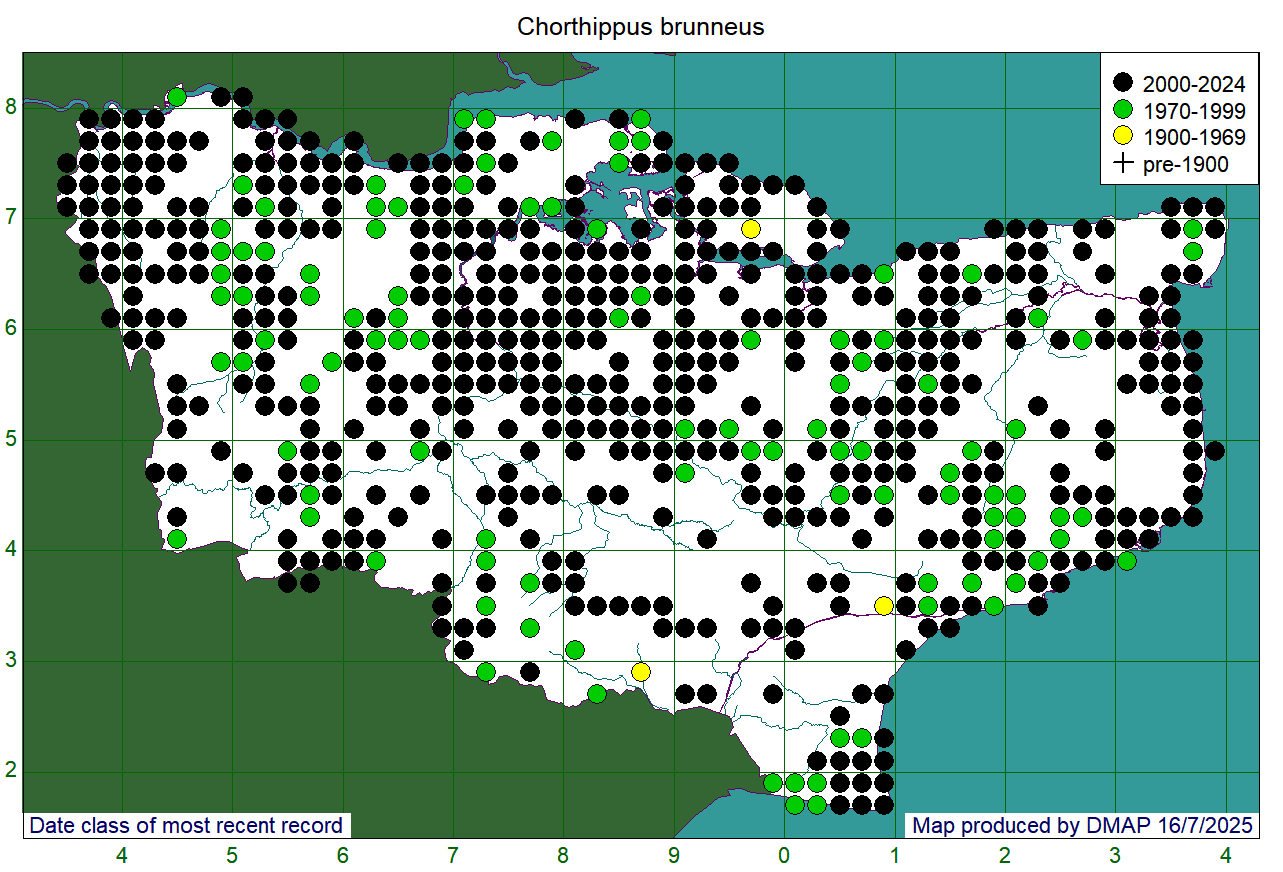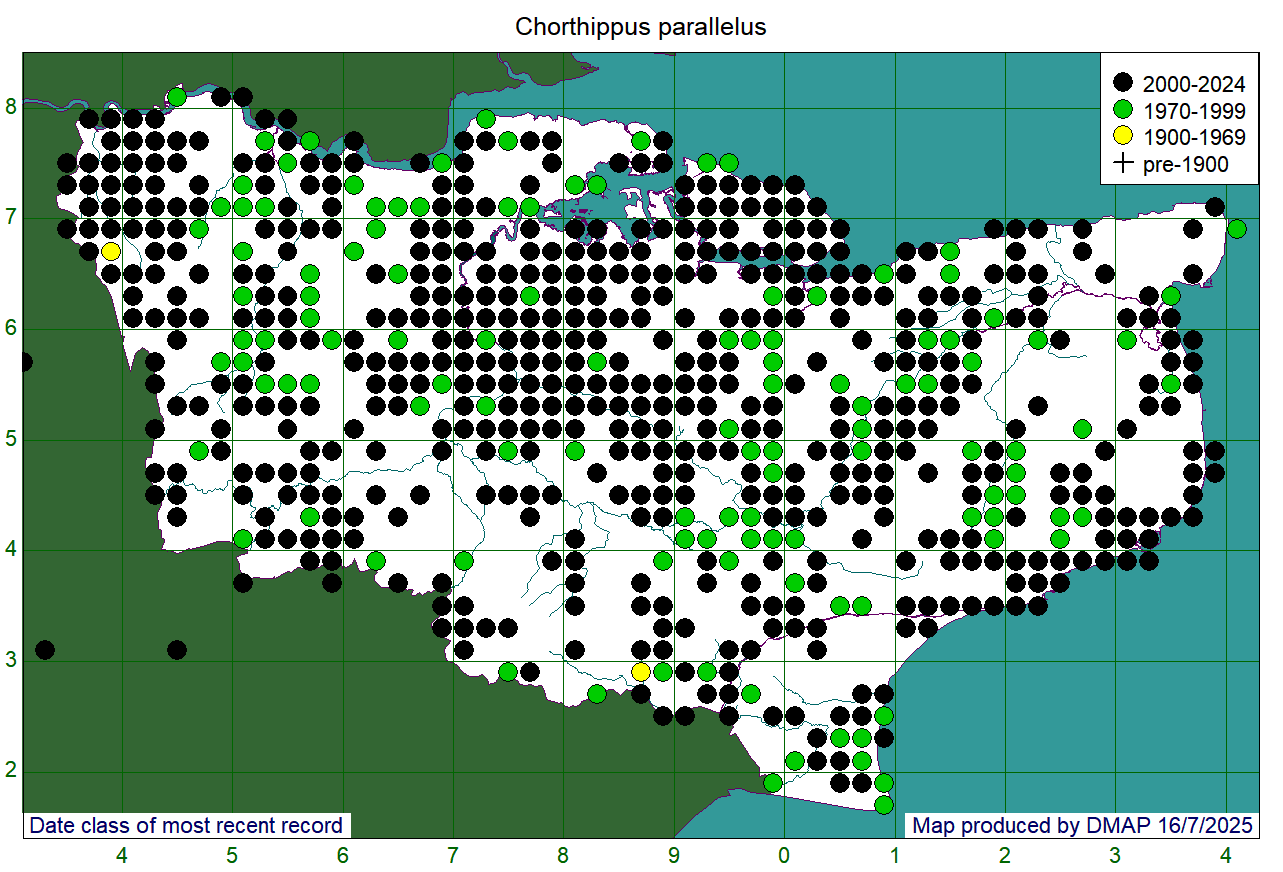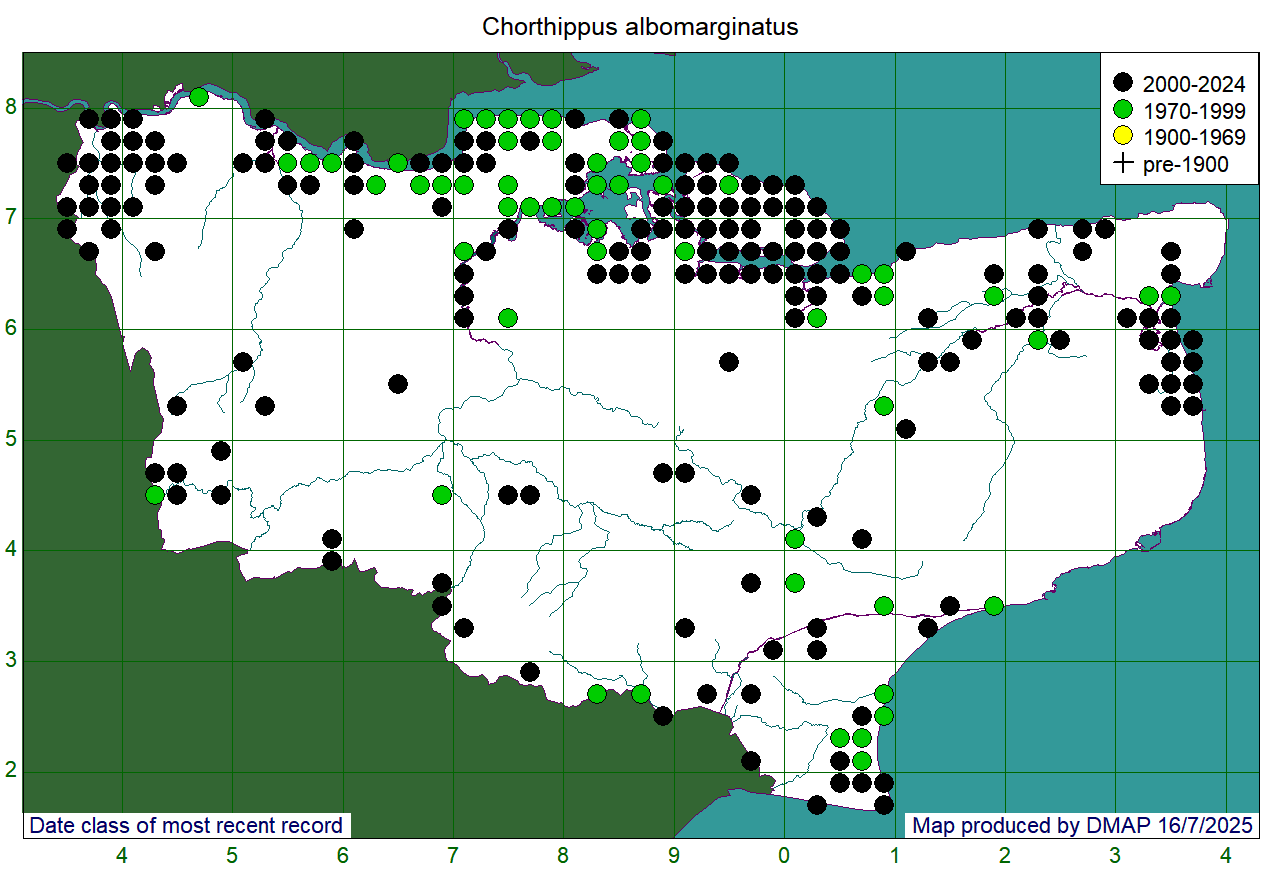Field Grasshopper Chorthippus brunneus
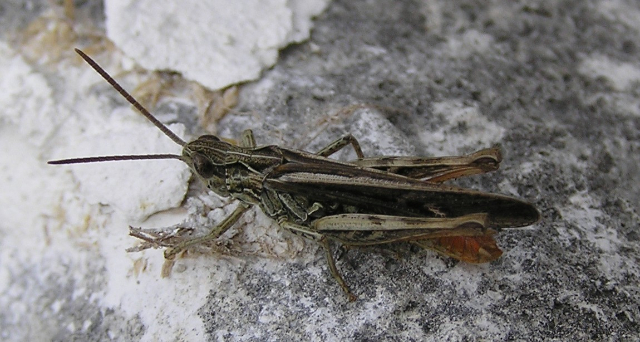
Field Grasshopper. Photo R I Moyse.
The Field Grasshopper is one of the commonest and most widespread grasshopper species in the UK, and can be abundant where habitat conditions are suitable. It prefers short or open grassy habitats in dry, sunny situations, and so can be found on open grassland, road verges, in parks and gardens, on waste ground, and in open coastal habitats. It generally avoids the kind of dense and more closed grassland habitats, such as pasture land, used Meadow Grasshopper and Lesser Marsh Grasshopper.
Map showing records at tetrad (2km x 2km square) resolution. Colour of dot shows date-class of most recent record for that tetrad.
Meadow Grasshopper Pseudochorthippus parallelus (previously Chorthippus parallelus)
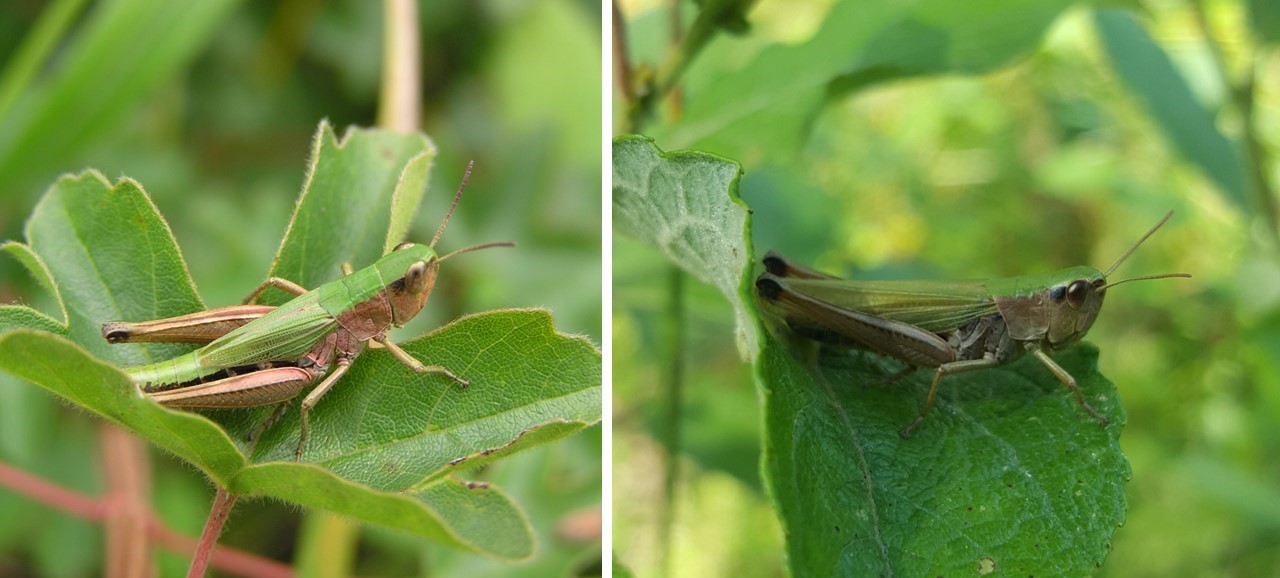
Meadow Grasshopper, female, typical form (left) and long-winged form (right). Photos R I Moyse.
Meadow Grasshoppers are very common and widespread, occurring in a wide range of grassy habitats across Britain, particularly in tall, coarse or well-vegetated grasslands in reasonably moist situations. They can reach high population densities in such habitats, where they are fairly easy to detect by disturbing the vegetation. Females have only vestigial wings, meaning that they are easily distinguished from other grasshoppers and cannot fly (however, a long-winged form which is able to fly does occasionally occur). The much smaller males, which are also flightless, are easily recognised by the dark 'knees' on their hind legs, and are often the first of the grasshoppers to be heard singing in early summer.
Map showing records at tetrad (2km x 2km square) resolution. Colour of dot shows date-class of most recent record for that tetrad. This species appears to be more-or-less ubiquitous, so blank areas in the map probably result from under-recording.
Lesser Marsh Grasshopper Chorthippus albomarginatus
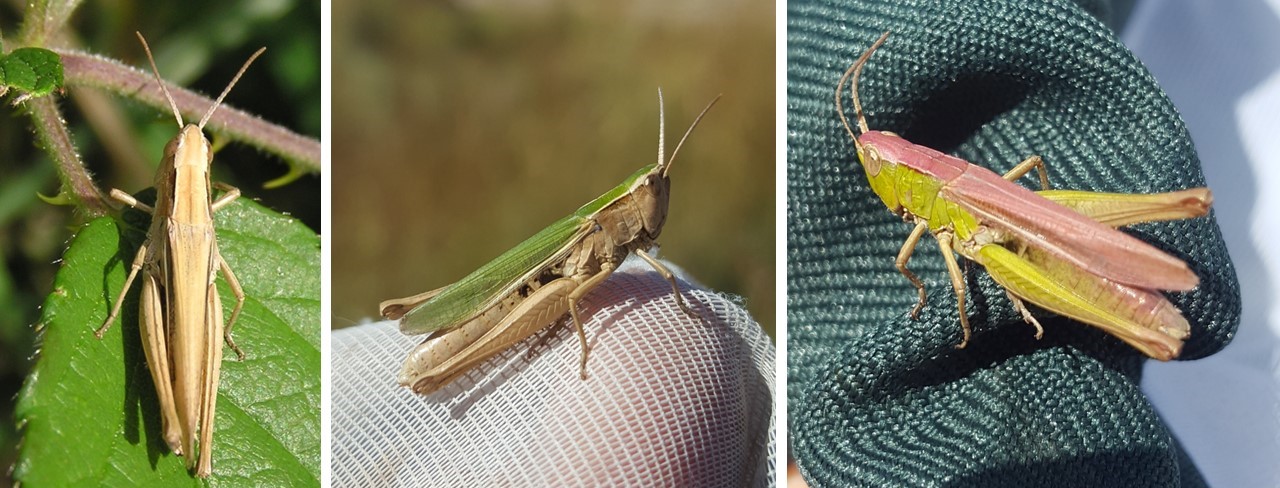
Lesser Marsh Grasshopper. A selection of colour forms: 'brown' (left), 'green brown sides' (centre) and 'dorsal stripe (purple)' (right). Photos R I Moyse.
Although the Lesser Marsh Grasshopper appears at first rather plain and undistinguished, it is relatively easy to pick up the 'jizz' of this species, particularly the shape of the pronotum (slightly, but noticeably, more parallel-sided than in Meadow Grasshopper) and the brown, often straw, colour (though a number of more brightly coloured varieties are known). Lesser Marsh Grasshoppers can be found in grassy habitats and coastal marsh, but also occur in drier habitats inland and have been found in woodland rides in the Blean. Ted Benton, in his New Naturalist volume, suggests that there has been range expansion associated with an ability to occupy drier habitats, which may explain the block of records from dry, inland locations in Greater London.
Map showing records at tetrad (2km x 2km square) resolution. Colour of dot shows date-class of most recent record for that tetrad.

